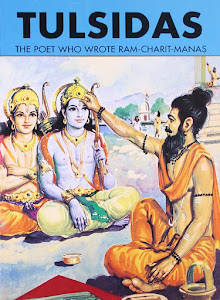Vedic god was nirgun.All this started from Purans. Each puran has different chief God. Some mentions parbrahm created trinity , some say aadishakti and in some upnishads each trinity in itself is parbrahm.
Lets see what famous bhakts say about it:
First read following lines of Saint Tulsidas:
व्यापक ब्रह्म निरंजन,निर्गुण विगत विनोद।
जो अज प्रेमभगति बसे, कौशल्या के गोद।।
सोइ सच्चिदानंद घन रामा। अज बिग्यान रूप बल धामा।।
ब्यापक ब्याप्य अखंड अनंता। अखिल अमोघसक्ति भगवंता।।
अगुन अदभ्र गिरा गोतीता। सबदरसी अनवद्य अजीता।।
निर्मम निराकार निरमोहा। नित्य निरंजन सुख संदोहा।।
प्रकृति पार प्रभु सब उर बासी। ब्रह्म निरीह बिरज अबिनासी।।
Ram of Tulsi is Parbrahma ,a nirakaar who has become sakar owing to love and devotion. Tulsidas further says: सगुनहिं अगुनही नही कछु भेदा means there is no difference between sagun and nirgun ishwar.
Now see Saint Kabir’s Ram : निर्गुण राम निरंजन राया, जिन वह सकल श्रृष्टि उपजाया । निर्गुण सगुन दोउ से न्यारा, कहे कबीर सो राम हमारा । Kabir’ s Ram is nirakaar parbrahma.
Aadi Shankaracharya says परब्रह्म ब्रह्मादिर-वंद्यमानं, शिवं शंकरं शंभु मीशानमीडॆ ।।
So, for Bhakts ,their ishtdevta is Parbarhm.
God is Almighty: It means he can be in any form or formless. So dispute over it has no logical validity.
Ramcharit Manas has answer of all such doubts. In Balkaand, saint Tulsidas makes it clear:
अगुन सगुन दुइ ब्रह्म सरूपा। अकथ अगाध अनादि अनूपा॥
ब्यापकु एकु ब्रह्म अबिनासी। सत चेतन घन आनँद रासी||
God is nirgun as well as Sagun. Nirgun god resides in each and every atom but people due to their ego dont realize it. But when people start bhakti, that nirgun god appears in their heart as sagun.: in a form bhakt wants to see. When heart of a bhakt become so pure that it becomes invincible (i.e. ayodhya) by vices ( moh , maya, ahankaar), God appears.( Ram takes birth). Ayodhya is Heart of Bhakt & Bhakti and Vishwas are Dasrath and Kaushlya.
Brihdarnyak Upnishada says
ॐ पूर्णमदः पूर्णमिदं पूर्णात् पूर्णमुदच्यते।
पूर्णस्य पूर्णमादाय पूर्णमेवावशिष्यते॥
Means God in itself is so complete that when complete is taken out, complete remains. This shloka proclaims everything.
I am going beyond question asked. but i love to.
Parbrahm is like zero which is in everyone.
1+0=1. 1 cant realize parbrahm resides in it.
1–1=0: When 1 discards his aham bhav i.e. his existence, one finds: oh parbrahm is in me. (इदं ब्रह्म)
1×0=0 When 1 Bhakt mingles with parBrahm, he becomes parBrahm( ब्रह्स्वरूपम)
1–0=1 : when 1 denies god, (god is there in form of zero though); he sees only himself. (अहमेव केवलं)
1/0 =indeterminate: When Parbrahm after realization comes in our heart..ie. supports us we see everything as brahmswarop.(अहम्ब्रह्मास्मि/तत्वमसि)
Ram, Shiv Vishnu or Durga or Ganesha any God is parbrham. He is sagun and nirgun. Worship any form any way. The differences are only in names. Meditate /chant upon any one as per choice. When you start your journey , you will go through steps 1–1, 1+0,1×0 and finally 1/0. You will see no difference.







